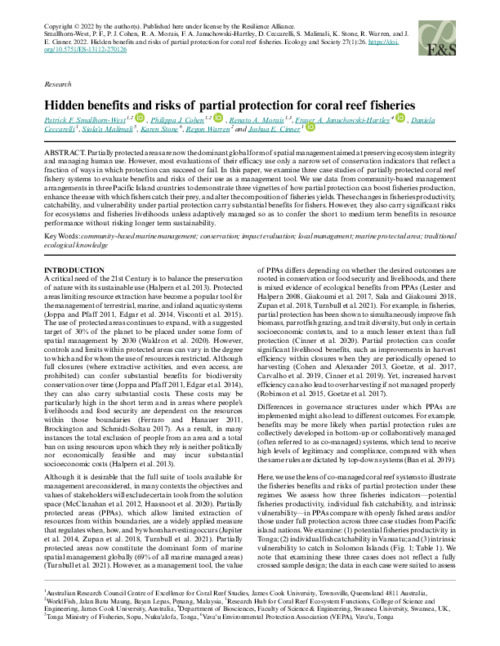Hidden benefits and risks of partial protection for coral reef fisheries

Partially protected areas are now the dominant global form of spatial management aimed at preserving ecosystem integrity and managing human use. However, most evaluations of their efficacy use only a narrow set of conservation indicators that reflect a fraction of ways in which protection can succeed or fail. In this paper, we examine three case studies of partially protected coral reef fishery systems to evaluate benefits and risks of their use as a management tool. We use data from community-based management arrangements in three Pacific Island countries to demonstrate three vignettes of how partial protection can boost fisheries production, enhance the ease with which fishers catch their prey, and alter the composition of fisheries yields. These changes in fisheries productivity, catchability, and vulnerability under partial protection carry substantial benefits for fishers. However, they also carry significant risks for ecosystems and fisheries livelihoods unless adaptively managed so as to confer the short to medium term benefits in resource performance without risking longer term sustainability.
Permalink
Date Available
Type
Publisher
Countries
ISSN
1708-3087
Copyright
CC-BY-4.0
Research Themes
Language